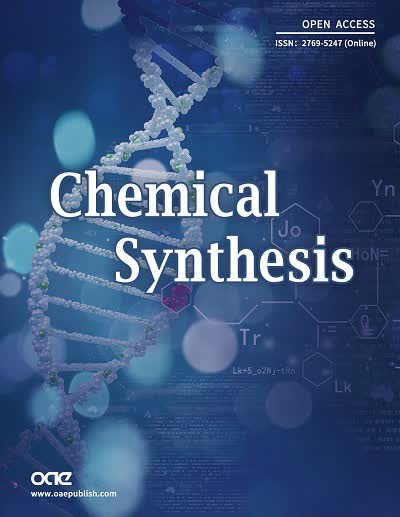Volume 4, Issue 2 (June, 2024) – 13 articles
Cover Picture: The hydrogen form of low-silica KFI zeolite, with a Si/Al ratio of 3.2 (referred to as H-KFI-3.2), has been shown to possess significant selectivity for monomethylamine (MMA) and dimethylamine (DMA) in methanol amination reactions. However, its industrial viability for MMA and DMA synthesis has been hindered by its relatively low methanol (MeOH) conversion and yield of MMA plus DMA. In this study, we synthesize high-silica KFI zeolite with an elevated framework Si/Al ratio of 5.4 (designated as KFI-5.4) using a novel K+ and 18-crown-6 complex [referred to as (K+)CCH, with a ratio of 18-crown-6 to K+ of 2.85] as an organic structure-directing agent. Control experiments have demonstrated that the presence of both K+ and OH- ions is essential for the formation of KFI-5.4 zeolite. The hydrogen form of KFI-5.4 (H-KFI-5.4) exhibits significantly enhanced MeOH conversion (95.2%) and yield (75.1%) of MMA plus DMA compared to the low-silica H-KFI-3.2 under similar reaction conditions. This represents the highest level of catalytic performance among reported small-pore zeolites to date. Furthermore, the yield and selectivity of MMA plus DMA can be further improved by modifying KFI-5.4 with an appropriate loading of Na+, which suppresses the formation of the by-product dimethyl ether. This study introduces a new high-silica KFI zeolite catalyst with exceptional MeOH conversion and yield for the production of MMA plus DMA.
view this paper Cover Picture: Solid oxide cells (SOCs) are regarded as a promising energy technology due to their large current density, diverse range of fuels, and high energy conversion efficiency. The double perovskite Sr2FeMoO6 (SFM) has attracted considerable attention for SOCs due to its tunable structure with superior performance of high conductivity, excellent thermal stability, and remarkable carbon deposition resistance in a reducing atmosphere. However, the electrocatalytic activity of SFM is considerably lower than that of commercial Ni-based SOC electrodes. A timely summary of the synthesis, modulation, and application of SFM perovskites is of great significance for its further development for SOCs. In this review, the methods employed in the preparation of SFM electrocatalysts are introduced first. Then, the advancements in the application of different SFM-based electrocatalysts in the field of SOCs are reviewed, and the research progress in the in-situ exsolution of SFM-based electrocatalysts through ion regulation is assessed. Finally, the future issues associated with SFM-based electrocatalysts are addressed in the realm of electrocatalysis, to advance their application.
view this paper









